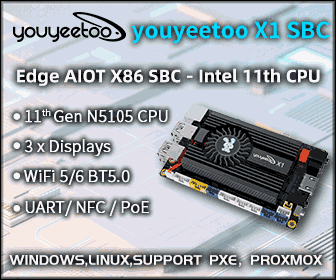Axiomtek Introduces PICO312 Fanless Apollo Lake Pico-ITX SBC
Axiomtek has recently introduce PICO312, a fanless pico-ITX single board computer powered by either Intel Pentium N4200 quad core processor or Celeron dual code N3350 processor N3350 part of “Apollo Lake” family. The board is equipped with a SO-DIMM socket supporting up to 8GB RAM, LVDS, VGA or HDMI output, and working within -20°C to +60°C without the need for a fan, but just a heat spreader with heatsink. Axiomek PICO312 Apollo Lake Pico-ITX board specifications: SoC – Intel Pentium N4200 quad core procesoor @ up to or Celeron N3350 processor @ up to with respectively 18EU or 12 EU Intel HD Graphics Gen 9. System Memory – 1x DDR3L-1867 SO-DIMM supporting up to 8GB Storage – 1x SATA-600 port, 1x mSATA via mini PCIe slot (both on the back of the board) Video Output / Display IF 1x LVDS; 18/24-bit single/dual channel 1x HDMI (N4200 model) or 1x VGA […]





